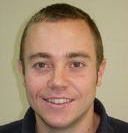Janssen Pharmaceutica NV is the Belgian affiliate of Janssen, Pharmaceutical companies of Johnson & Johnson. Johnson & Johnson is a major health care company headquartered in the US. Janssen focuses on discovery, development, and marketing in 5 major therapeutic areas: Cardiovascular and Metabolism, Oncology, Neuroscience, Immunology, and Infectious Diseases & Vaccines. Janssen is actively participating in numerous public-private consortia, including over 10 IMI programs, FP7 programs, the Netherlands Metabolomics Centre, and so on.
Janssen’s interests are in developing and using advanced molecular simulation methods to optimize lead compounds in discovery programs, and to predict the activity of compounds with targets that have mutated residues. The latter application can be of value in diagnostics, by predicting the best possible compound for a patient clinically, but is also of use in discovery, where mutated targets occur regularly in antibacterials, antivirals, and oncology compounds. Activities described in Work Package 2 (Task 2.3) are closely aligned with our interest. Specifically, in subtask 2.3.1 we will help improve the computational approaches to free energy of binding calculations. The expertise that will be built up will be used in future drug discovery programs. In subtask 2.3.2 the focus is on GPCR modelling, which is also something of direct interest to Janssen, as we have a long history of GPCR drug discovery programs, many of which have led to marketed drugs. We currently have several active drug discovery programs on GPCRs for which no structure has been solved, and building the expertise on the proposed hierarchical GPCR modelling protocol in subtask 2.3.2 will be of immediate use. We have also been exploring binding kinetics of small molecules to targets as a way to improve the pharmacodynamic effect, or as a way to reduce the systemic exposure while retaining full target engagement. A recent marketed Janssen drug, ibrutinib, uses covalent attachment to the target BTK for an extremely slow off rate. We regularly measure binding kinetics to differentiate the compounds in discovery programs. In some cases a fast off rate is desired, such as with antipsychotics and the D2 receptor. The ability to predict the binding kinetics of compounds is still in its infancy, and therefore the activities in subtask 2.3.3 are of great interest and practical use to Janssen.
The Medical Devices arm of Johnson and Johnson would also benefit from the proposed activities in the cardiovascular space as described in Work Package 2 (Task 2.2). We do not yet have active programs around flow simulation in stents, but are interested in lesion formation in the heart and have done some computational work around those aspects.
The use of high performance computing in these areas is something we are exploring actively, with internal and external resources. We realize that it is essential to have access to quality software and hardware, and the project will certainly be highly valuable for us in that respect. It has become clear that our main strategy for this will be to access external resources, as this provides the best flexibility and cost effectiveness. We are therefore highly interested in developing new options for external access to high performance computing through this H2020 project.
Key Personnel
 Dr Herman van Vlijmen – Holds a PhD in Physical Chemistry from Harvard University. He worked at Biogen Idec (1996-2005) in Boston, US, as computational chemist designing small molecules and protein therapeutics. Since 2005 he has been at Janssen in Belgium, leading a group of computational chemists and biologists.
Dr Herman van Vlijmen – Holds a PhD in Physical Chemistry from Harvard University. He worked at Biogen Idec (1996-2005) in Boston, US, as computational chemist designing small molecules and protein therapeutics. Since 2005 he has been at Janssen in Belgium, leading a group of computational chemists and biologists.
 Dr Gary Tresadern – Holds a PhD in Computational Chemistry from the University of Manchester, UK. He worked as a computational chemist scientist at Tripos Discovery Research from 2002 to 2005, after which he joined Janssen in Toledo, Spain, as Scientist in Computational Chemistry. He is currently a Senior Principal Scientist at Janssen in Belgium, directly involved in molecular design in several drug discovery programs, and has extensively applied molecular dynamics calculations in his research.
Dr Gary Tresadern – Holds a PhD in Computational Chemistry from the University of Manchester, UK. He worked as a computational chemist scientist at Tripos Discovery Research from 2002 to 2005, after which he joined Janssen in Toledo, Spain, as Scientist in Computational Chemistry. He is currently a Senior Principal Scientist at Janssen in Belgium, directly involved in molecular design in several drug discovery programs, and has extensively applied molecular dynamics calculations in his research.
 Dr Laura Perez-Benito – Post-doc researcher in the computational chemistry group at Janssen Pharmaceutica, Belgium. She graduated in Chemistry from the University of Barcelona and received a PhD in Biochemistry, Molecular Biology and Biomedicine from the Autonomous University of Barcelona in the group of Professor Leonardo Pardo. Her PhD focussed on applying molecular dynamics methods (such as Classical MD and Free energy perturbation) to the study of GPCRs. She has worked at Janssen and Almirral where she applied MD simulations to drug discovery projects.
Dr Laura Perez-Benito – Post-doc researcher in the computational chemistry group at Janssen Pharmaceutica, Belgium. She graduated in Chemistry from the University of Barcelona and received a PhD in Biochemistry, Molecular Biology and Biomedicine from the Autonomous University of Barcelona in the group of Professor Leonardo Pardo. Her PhD focussed on applying molecular dynamics methods (such as Classical MD and Free energy perturbation) to the study of GPCRs. She has worked at Janssen and Almirral where she applied MD simulations to drug discovery projects.
